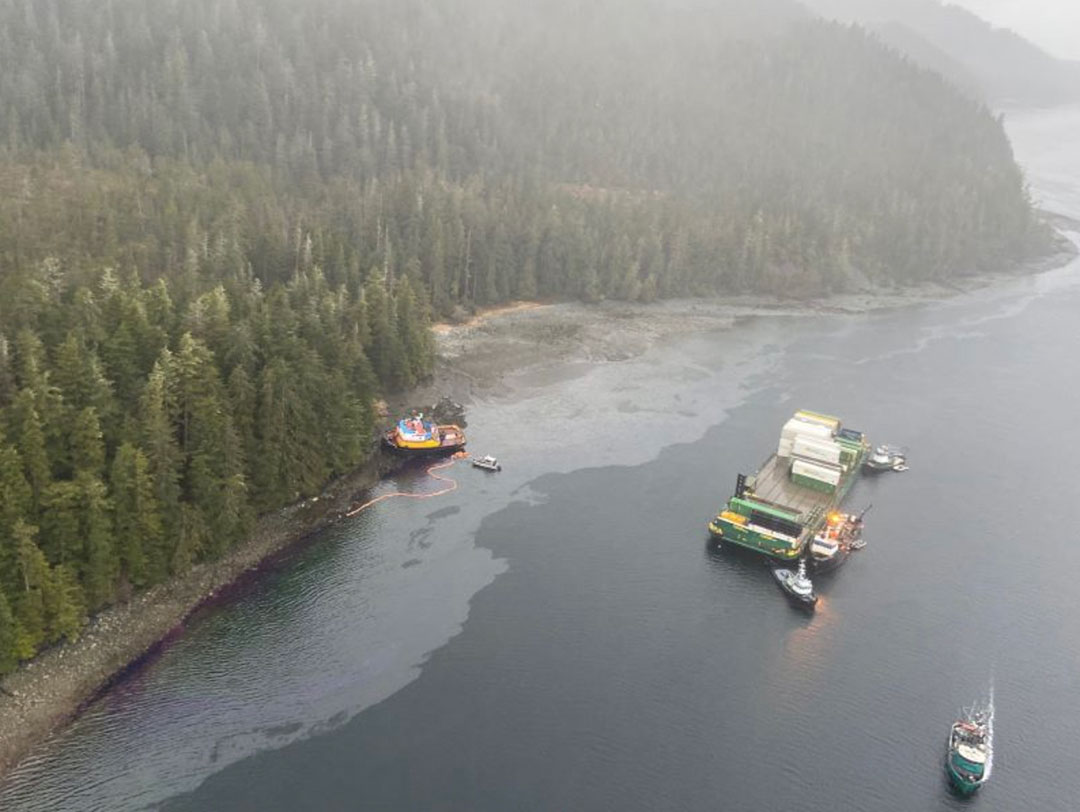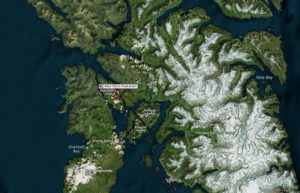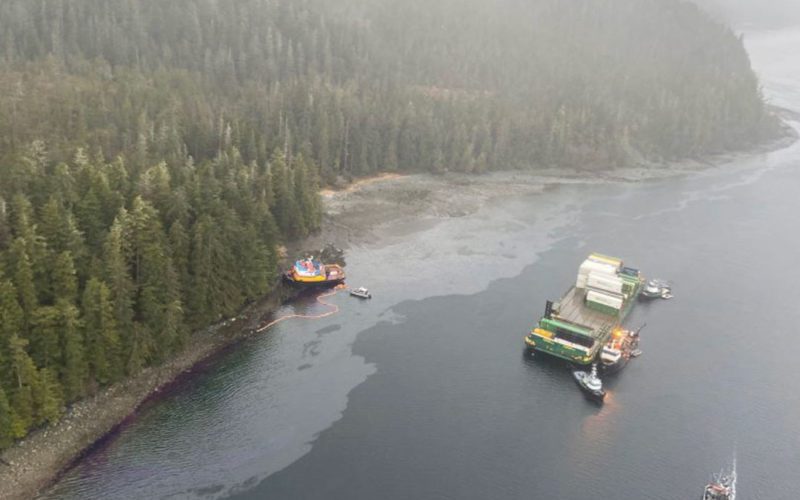
An oceangoing tugboat lost its steering while transiting a narrow strait northwest of Sitka, Alaska, and its cargo barge collided with the vessel and pushed it aground.
The 3,000-hp Western Mariner ran onto a rocky beach along the Neva Strait after the impact with its cargo barge Chichagof Provider. The grounding on March 21 at about 0300 ruptured a forward fuel tank on the tugboat. Roughly 5,300 gallons of diesel escaped into the waterway.

The Alaska Department of Environmental Conservation (ADEC) attributed the incident to a “temporary steering failure” aboard the 84-foot tugboat. Capt. Russ Shrewsbury, vice president of tug operator Western Towboat Co., described a similar chain of events.
“She went hard over on the captain, and we do not know why just yet,” he said in an email. “He attempted to recover but towing through Neva Strait we have the barge only 100 feet behind us, so that only left him seconds to respond. The barge ended up clipping the tug and driving it ashore, unfortunately.”
Western Mariner and Chichagof Provider run a regular freight service between Petersburg and Sitka, Alaska, stopping at small remote villages along the way. The tug was bound for Sitka when it grounded about 18 miles northwest of the city on the east side of Partofshikof Island.
The incident spurred a massive salvage response led by a unified command involving the Coast Guard, ADEC and Western Towboat. Western Towboat hired local salvors Hansen Maritime, which reached the grounded tugboat at about 0800 that morning. The Southeast Alaska Petroleum Response Organization (SEAPRO) and Global Diving & Salvage also responded.
Salvage teams placed multiple layers of protective boom around the tugboat and worked to stop the vessel from leaking fuel. Authorities announced on March 24 that diesel was no longer escaping from the tugboat.
Western Mariner grounded with about 43,500 gallons of diesel fuel on board. Crews pumped 33,040 gallons of diesel from the unaffected tanks after the tug grounded. Another 4,453 gallons of fuel was recovered from the flooded engine room, ADEC said on April 5. Skimmers removed about 700 gallons of fuel from water around the tug.
Flights over Neva Strait and surrounding waterways identified a 4-mile sheen on the day of the grounding. Sheening was spotted during overflights as late as March 31, when SEAPRO personnel found a “heavily weathered, broken silver sheen” around 60 feet from the Siginaka Islands. Shoreline operations continued through at least April 5 in a handful of areas, and ADEC said shoreline monitoring would continue into the spring.
The pristine waters around Sitka are important for Native Alaskan communities and commercial fisheries. Neva Strait, for instance, is a sea cucumber harvesting ground, and massive Pacific herring schools also were nearby to spawn. Overflights did not identify herring schools near any sheens, according to ADEC.
“Humpback whales, porpoises, sea lions, harbor seals, shorebirds and eagles have been observed in the area, but no impacts to marine mammals or avian wildlife have been reported,” the March 27 ADEC update said.
Shrewsbury described the tugboat salvage as “pretty cut and dry.” Salvors pumped out the tanks and then used Western Mariner’s winch with an anchor to pull the tug off the beach. The tugboat Wendy O and salvage vessel Salvation assisted with the operation, he said.
Western Mariner was towed to Sitka after coming free. It remained tied up at the Samson Tug and Barge facility while awaiting Coast Guard approval to tow the vessel for repairs.

